Paste Power Rankings: The 10 Best TV Shows on Right Now, from The Great to She-Ra
Illustration by Christine Fernando and Soleil Collins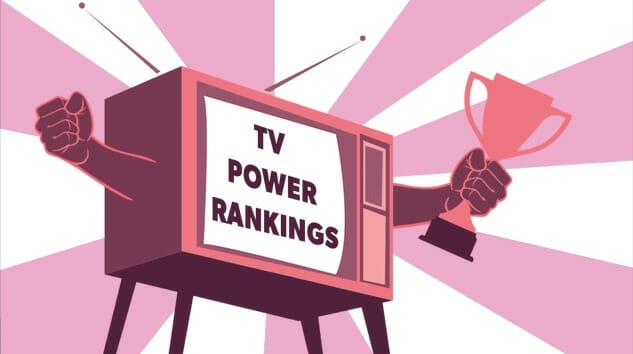
TV has truly become all-encompassing. Now that movie theaters are closed, where can you watch the latest releases? At home, on your TV. Since school is canceled, where do you experience graduation? At home, on your TV. Few have stepped out into the abyss of uncertainty during the pandemic quite like this year’s graduating seniors, be it from high school or college, but they have been celebrated virtually at least. President Obama, Oprah Winfrey, Awkwafina, Simone Biles, LeBron James, the Jonas Brothers, Pharrell Williams, Megan Rapinoe, and many more joined up on either a Facebook/Instagram or network TV event this last week to pass on wisdom and encouragement to a new generation walking out into a crumbling economy (mine did it too—it’s not great Bob!) Still, it’s nice to have something that unites us in these divided times. That being TV, of course.
The rules for the Power Rankings are simple: Any current series on TV qualifies, whether it’s a comedy, drama, news program, animated series, variety show or sports event. It can be on a network, basic cable, premium channel, Netflix, Amazon, Hulu, YouTube or whatever you can stream on your smart TV, as long as a new episode was made available the previous week (ending Sunday) —or, in the case of shows released all at once, it has to have been released within the previous four weeks. And be sure to check out our new section, This Week, which explains the show’s rank on the list.
The voting panel is composed of Paste Editors and TV writers with a pretty broad range of tastes. We’re merciless: a bad episode can knock you right off this list. So much good TV is available right now.
Honorable Mention: Legends of Tomorrow (The CW), Vida (Starz), Middleditch and Schwartz (Netflix), Penny Dreadful: City of Angels (Showtime), Trying (Apple TV+)
10. Dead to Me
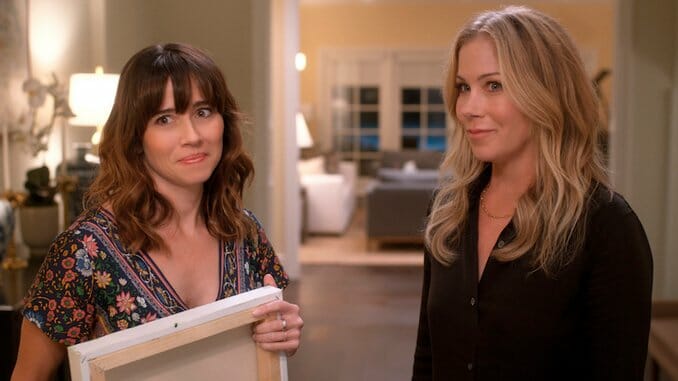
Network: Netflix
Last Week’s Ranking: 7
This Week: Minus the murders, Judy and Jen’s friendship is a wonderful thing.
As a Bloodline watcher, I can’t help but constantly expect Linda Cardellini’s Dead to Me character to say, Rayburn-style, “we’re not bad people, we just did a bad thing.” Because, essentially, that same sentiment is at the center of Liz Feldman’s diverting dark comedy series. Two women forge a friendship through grief, and then discover that their relationship is really built on lies—and neither is as innocent as they seem. And yet, neither is really fully guilty. Further, the men in their lives are not that great, but also, not exactly awful enough to justify what happens to them.
What continues to anchor the series, and makes it endlessly compelling, are the performances from excellent leads Lina Cardellini and Christina Applegate. They have a natural rapport that makes their onscreen friendship believable beyond the point of Wine Mom Energy. They are family. With Oscar and Felix personalities, they drive each other crazy but being apart is not an option. It’s hard to make lifelong friends as you age, people you can really trust and want to spend all of your time with. Jen and Judy’s relationship—and their actions—are heightened for drama of course, but there is a very real truth at the center that creates a certain ache for the kind of best friend many of us haven’t had since school. Not just a friend who you are the closest to by default, but someone you would want with you in a crisis. It’s a rare and beautiful thing—despite, again, the origins and continued ups and downs of this particular relationship.
Dead to Me keeps its world small and coincidences high, but that’s also what helps us really get to know these characters on a level that makes their emotional beats land in the moment. If the show was released weekly, its cliffhanger endings might carry more weight and anticipation, but as it is the series remains a breezy binge watch with sometimes surprising emotional gut punches—even though the new season doesn’t quite have the same spark as its first (and begins to fade as soon as it ends). Still, Dead to Me is a worthy exploration of grief and guilt, and what holding on to those things through a veil of lies can do to a person. And while it may be scattered when it comes to its moral universe, it’s overarching message is clear: No matter what you’re going through, what you really need is a friend. —Allison Keene
9. The Good Fight
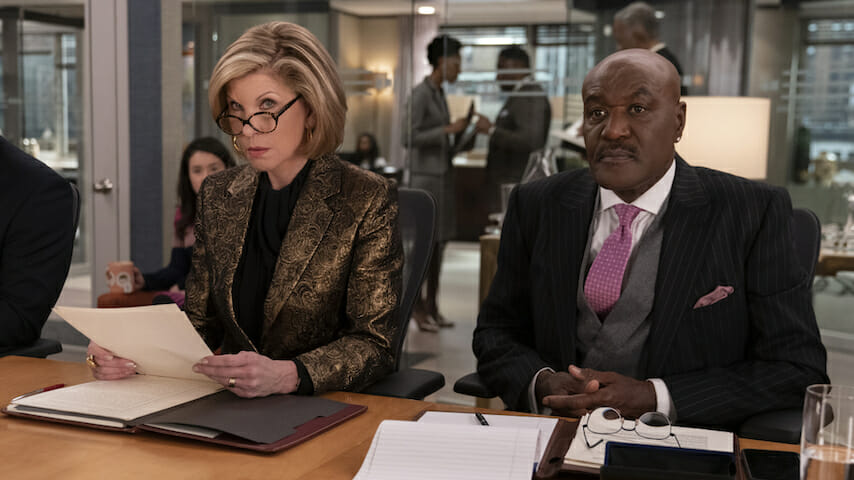
Network: CBS All Access
Last Week’s Ranking: 5
This Week: Only mostly existentially horrifying
What is Memo 618? After kicking off the fourth season with Diane’s (Christine Baranski) trippy hallucination that Hillary Clinton actually won in 2016 (not, it turns out, as wonderful as we would have thought), the CBS All Access drama launched its season-long mystery of “What is memo 618 and what does it mean?” Reddick, Boseman & Lockhart has joined forces with a much bigger, much more powerful firm headed by Gavin Firth (comedy veteran John Larroquette at his smarmiest). The new firm is fond of gargoyles and, in a running gag, really likes their dogs. Along the way there’s the delightful return of divorce lawyer David Lee (Zach Grenier), the beloved nemesis of The Good Wife and Michael J. Fox’s conniving Louis Canning. Lucca (Cush Jumbo) has a new best friend she might not need in wealthy cosmetic mogul Bianca Skye (Chasten Harmon), and Julius (Michael Boatman) is finding that being a federal judge is not all that he dreamed of. Fret not! Diane and her fabulous statement necklaces are ready to well, fight the good fight in the search for the truth. Over two series and 11 seasons, creators Michelle and Robert King have crafted worlds rich in beloved characters and ripe with intriguing plots. Its smart humor zigs and zags throughout each installment. Like its predecessor, the series works as a political drama, an interpersonal one, and even as a case of the week. But more than anything, The Good Fight continues to provide the group therapy we all need to deal with the current administration. It’s the fever dream we’ve all been waiting for.—Amy Amatangelo
8. Never Have I Ever
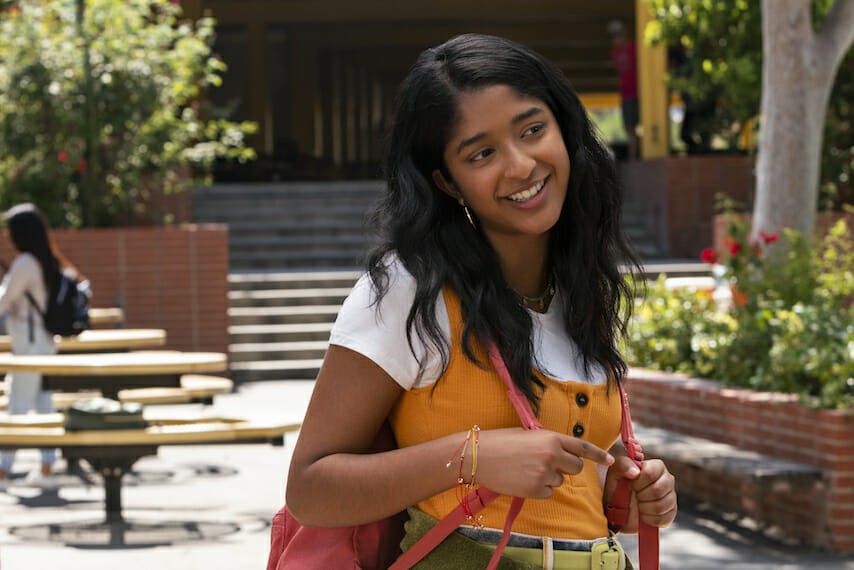
Network: Netflix
Last Week’s Ranking: 6
This Week: It’s just adorable.
15 sucks. You’re not sure who you are or what you’re doing or who you should be doing it with, but you’re 100% certain that everyone around you is always laser-focused on every embarrassing mistake that you make. Mindy Kaling’s new coming-of-age sitcom taps into the painful awkwardness of figuring it all out with the same mix of earnestness, realism and humor as Freaks and Geeks and The Wonder Years, but filtered through a cultural lens not often seen on American TV. Devi Vishwakumar isn’t just grappling with typical teenage drama, but is stuck between two cultures that she never quite feels like a full member of: the American life she was born and raised in, and the Indian heritage of her family. Maitreyi Ramakrishnan captures this anxiety and charm beautifully, that weird mix of constant shame and unearned confidence, in what is shockingly her first professional acting role. If you’re looking for a teen comedy that reflects the ups and downs of real life and is actually funny, here’s your chance. —Garrett Martin
7. Snowpiercer
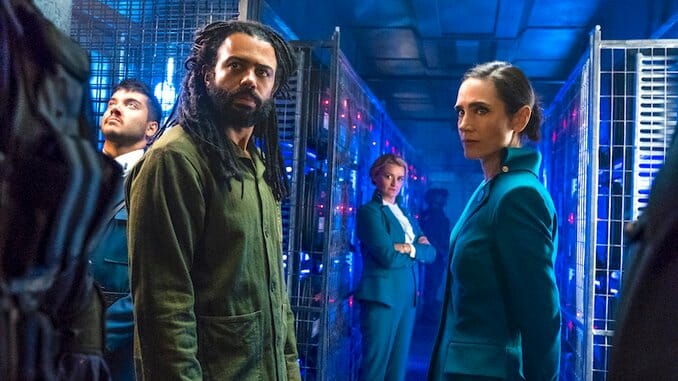
Network: TNT
Last Week’s Ranking: Not Eligible
This Week: A flawed but fascinating start.
The most unsettling thing about watching a show about a post-apocalyptic future during a pandemic is that even the most random details hit a little too close to home. At one point during TNT’s new series, Snowpiercer, head of hospitality Melanie (a perfectly cast Jennifer Connelly) asks one of the train’s conductors, “Do you remember fresh air? Do you remember going for walks?” to which he responds, after a thoughtful pause, “Rain. I miss the sound of rain.”
The premise for the series is that in the not-too-distant future, climate change has taken a turn for the worse, and scientists attempting to counteract the damage humanity has enacted upon our planet accidentally freeze the world instead. A supposedly forward-thinking “visionary” named Mr. Wilford predicts the coming disaster, and builds a train 1,001 cars long that will house all of Earth’s last remaining citizens, circling the globe without an end in sight. As is the case with society itself, the train is divided into various classes—first, second, third, and the tail—each defined by varying degrees of privilege and poverty. The story is based on the French graphic novel Le Transperceneige, originally published in 1982; Oscar winner Bong Joon-Ho adapted it into a star-studded, big-screen action flick in 2013 (see: Chris Evans, Octavia Spencer, Tilda Swinton, and Song Kang-Ho).
In place of Bong’s Hollywood action hero Evans, the TV series enlists Hamilton star Daveed Diggs as Andre Layton, the reigning leader of the mistreated “tailies” section of the train. Instead of a more straightforward rebellion pushing Evans’ Curtis from the tail to the front of the train, the series takes advantage of its multi-chapter format to present a complex web of lies, false identities, and complicity.
It’s important to note here that when Bong’s film was released in 2013, the world was a much different place. Snowpiercer, the movie, felt prophetic, like a warning of what could happen if humans continued to allow capitalistic impulses guide our decisions. But the TV series isn’t prophetic. It’s a mirror. What happens when there is less to learn from the allegory than from reality itself? When simile becomes metaphor? It’s not that the society we live in is like the fictional world of Snowpiercer; it’s that the society we live in is Snowpiercer. —Joyce Chen
6. Belgravia
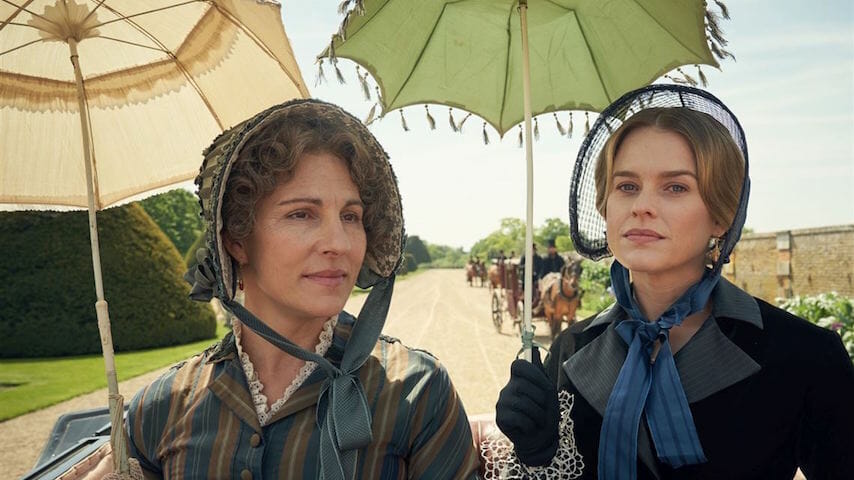
Network: Epix
Last Week’s Ranking: Not Ranked
This Week: An incredibly satisfying finale for 2020’s best British beach-read of a show.
For those who have missed the swirling, upperclass dramas of Downton Abbey, its creator Julian Fellowes has penned another (much shorter) story worth the obsession: Belgravia, whose sleek six episodes provide the TV equivalent of a beach read romp, one that is engaging and ultimately very satisfying. The series focuses on a set of wealthy denizens and the up-and-coming merchant class of this newly planned area of London, beginning on a fateful (true) night of an infamous ball that takes place on the eve of the Battle of Waterloo. The choices made there between two young lovers reverberate throughout the generations, both old and young, creating a web of lies and pain and coverups that continue to define relationships decades later. That’s a purposefully vague description, because the revelations of these connections and twists are what make Belgravia such fun.
The secrets that our socialite lynchpin Anne Trenchard (Tamsin Greig) holds—and chooses to reveal—are what kickstart the whole affair, including bad debts, secret babies, eloping lovers, useless heirs, and clandestine meetings. All of it layers upon itself to lead us to a thrilling final two episodes, where viewers (this one included) will be desperate for good information to spread as rapidly as the bad has, and for misunderstands to be cleared up and away during a chaotic climax. Everything comes down to money, of course—those who have it, those who want it, those who will do anything for more of it.
Belgravia would feel fully at home on PBS Masterpiece, and perhaps one day will end up there. For now, fans will have to look a little further on the cable dial (or consider adding this premium service, which is currently running a 30-day free trial) to unlock its secrets. —Allison Keene
5. Normal People
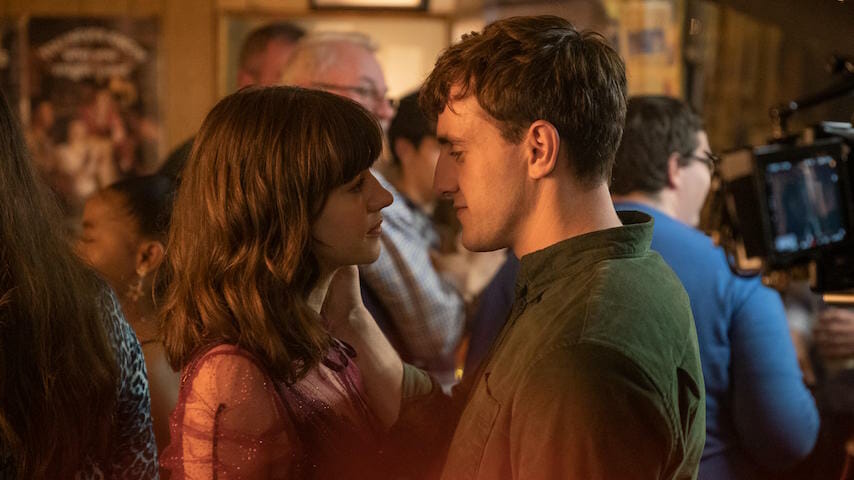
Network: Hulu
Last Week’s Ranking: 4
This Week: “It’s not like this with other people,” and it’s not like this with other shows!
Many people are confined to their homes with various family members right now, but Hulu’s new show Normal People is not one to watch with your mom. Trust me on this. Normal People is a journey best taken alone in a dark room. The series, especially in the beginning, is uninhibitedly horny and would certainly make for an awkward group watch. If you’ve read the book, all this hot-and-bothered business probably sounds familiar (author Sally Rooney writes freely and without using conventional punctuation structures, bringing the reader even closer to the action). But it’s also a deeply felt story.
For the uninitiated, Normal People is the tale of two Irish teens, outsider Marianne and cool-kid Connell who, against all the odds (namely, a high school social hierarchy) fall in love and float in and out of each other’s lives into their university years. In the new adaptation starring Daisy Edgar-Jones and Paul Mescal (both poised for breakouts), the plot is treated delicately and with great care, allowing for lots of small, quiet moments with these characters as they change, mature, break up, have sex, and make up over the years. At first, they hide their relationship from Connell’s popular friends, a group of random hot Irish people who stalk the halls of a high school that looks inexplicably like an airport terminal. Connell comes across as quite a scumbag early on, but the imperfectness of both his and Marianne’s youthful mistakes are part of what makes Normal People so real and endearing.
in the end, Normal People isn’t just some erotic but sweet story of turbulent young love. It’s a portrait of intimacy itself—and I do mean both kinds, sexual and emotional. There’s an earnestness to it that you won’t find in other TV shows aimed at young adults. But take away all the dynamic storytelling and so-real-it-hurts humanity, and you’re still left with a steamy quarantine binge that’ll leave your heart racing in the best way. But you’ve been warned: Just don’t watch with your friends or loved-ones if you, like Connell, are prone to blushing. —Ellen Johnson
4. She-Ra and the Princesses of Power
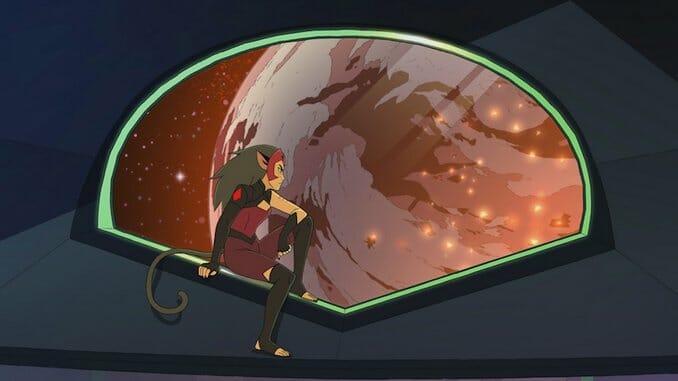
Network: Netflix
Last Week’s Ranking: Not Eligible
This Week: An excellent final season sees all of our favorite ‘ships set sail.
Late last Thursday night, Netflix dropped the fifth and final season of Dreamworks’ extremely fun, occasionally harrowing She-Ra and the Princesses of Power.
In terms of the series’ epic battle between good (Etheria’s quirky, magic-wielding Princesses) and evil (the immortal Horde Prime and his clone/robot horde army), the season had a lot of ground to cover—so much, in fact, that it extended all the way into space. (Yes, that’s right: SHE-RA … IN SPACE is very real, and not just a fever dream you had when you first read about Netflix planning to reboot such a wild ‘80s property for a contemporary audience.)
More importantly, though, Catra and Adora had spent the last four seasons pacing around each other with such crackling (and often murderous) intensity that if #Catradora didn’t happen by the end of Season 5 … well, let’s just say Seahawk’s (Jordan Fisher) ship-burning tendencies would look like child’s play by comparison.
With the rainbow-solid queer credentials brought to the table by creator Noelle Stevenson (Lumberjanes, Nimona, The Fire Never Goes Out) and her team, and with the equally sparkling queer representation present in the series from the very beginning (Bow’s nerdy dads, thirtysomething Princess couple Spinerella and Netossa, Scorpia’s whole Scorpianess), fans needn’t have worried that their favorite friends-to-enemies lesbian ‘ship would right itself in the end. Still, when the frenemies’ long-awaited admission of love gave Adora enough strength to stop that apocalyptic countdown in the final minutes of “Heart Part 2,” you could almost feel the internet breathe a collective sigh of relieved joy. —Alexis Gunderson
3. Mrs. America
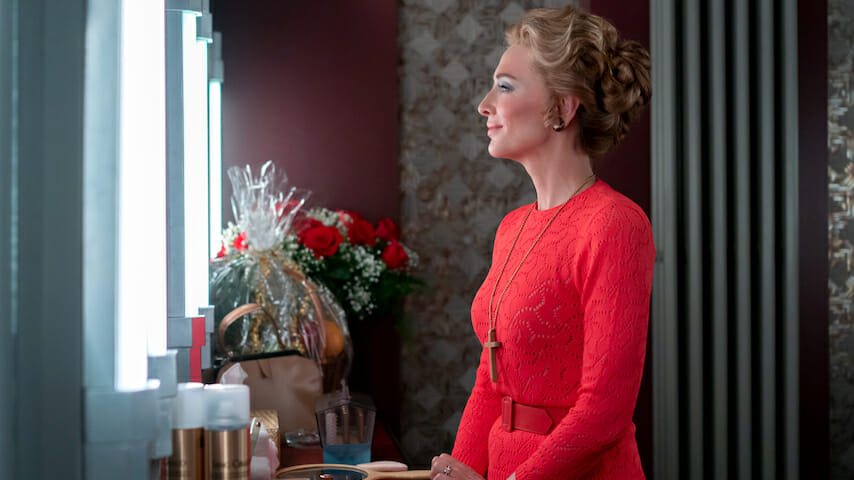
Network: Hulu/FX
Last Week’s Ranking: 9
This Week: #BellaForSenate!
Equality is at the heart of Mrs. America. The series, which starts in 1971, examines the national debate taking place over the Equal Rights Amendment, meant to put women on the same legal footing as men. For some housewives across America, though, the amendment was concerning because it was ushered in by second-wave feminists who (they believed) threatened to dismantle traditional family values. And at the head of that anti-ERA movement was Illinois housewife and mother of six, Phyllis Schlafley (an elegant Cate Blanchett).
Phyllis is the nexus of everything happening in Mrs. America, but each episode also spends time with one or two other important women on the opposite side of the movement, from Gloria Steinem (Rose Byrne) to Betty Friedan (Tracey Ullman) to the first black woman to run for President, Shirley Chisholm (Uzo Aduba). Where the limited series, created by Dahvi Waller, really excels (and manages to eschew the issues of other series dealing with similar topics) is that it’s not overly reverential to these real-life characters. It also, crucially, doesn’t treat them as caricatures—there is a deep, recognizable, and very true humanity to each of these women that is immediately authentic, as they move in and out of each other’s lives.
Mrs. America is juggling a lot, but it never feels like too much. Like the ever-present (worthless) question of “can a woman have it all?” Mrs. America does have it all, and more. It illuminates an essential part of the women’s liberation movement and the real women behind it (and against it) in ways that are engrossing, enlightening, and sometimes enraging. —Allison Keene
2. What We Do in the Shadows
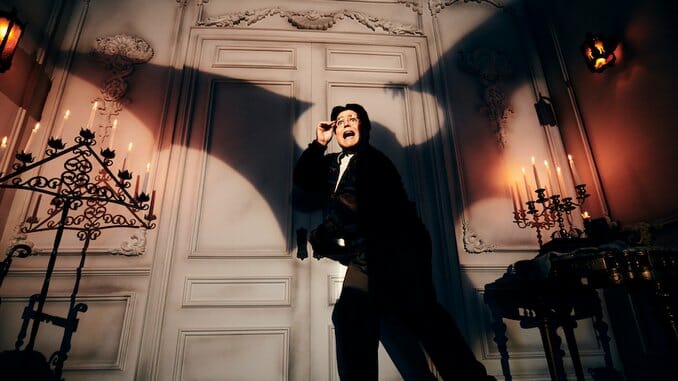
Network: FX
Last Week’s Ranking: 2
This Week: Jackie Daytona, Jim the Vampire, and one of 2020’s best episodes.
In its first season on FX, What We Do in the Shadows took Jemaine Clement and Taika Waititi’s film to a delightfully banal Staten Island. It was a laid-back good time filled with the hilarious injection of out-of-touch vampires Nandor (Kayvan Novak), Nadja (Natasia Demetriou), and Laszlo (Matt Berry) into the land of the living. Things are still hilariously dull in Season 2, but the jokes don’t need too much energy—or even have to be that funny. In the long-nailed hands of these undead roommates, even a protracted “updog” bit slays.
What We Do in the Shadows’ new episodes begin by slowly settling into a sitcom. Still, the groundwork laid last season helps this one stay low-key. We stay in the mansion more. The bigger visual gags aren’t massive setpieces, but sustained silliness. Novak, Berry, Demetriou, and Mark Proksch as energy vampire Colin Robinson sell entire scenes with a look and a deadpan, even if it’s something as high concept as the vampires finding out they’ve all got ghosts of themselves. Nandor’s familiar, Guillermo (Harvey Guillén), is the show’s dynamic center, and it is upon his sagging shoulders that the new season’s plot rests, as he grapples with his genetic predisposition to slay vampires as a descendant of Van Helsing.
Since the undead housemates are still wanted by the Vampire Council, the possibility is still there for a cameo-laden episode later in the season. However, the swaggering silliness of the first episodes shows the acceptance of a smaller, more sustainable comedy that’s less concerned about plotting the future of the undead and more about un-living in the moment. —Jacob Oller
1. The Great
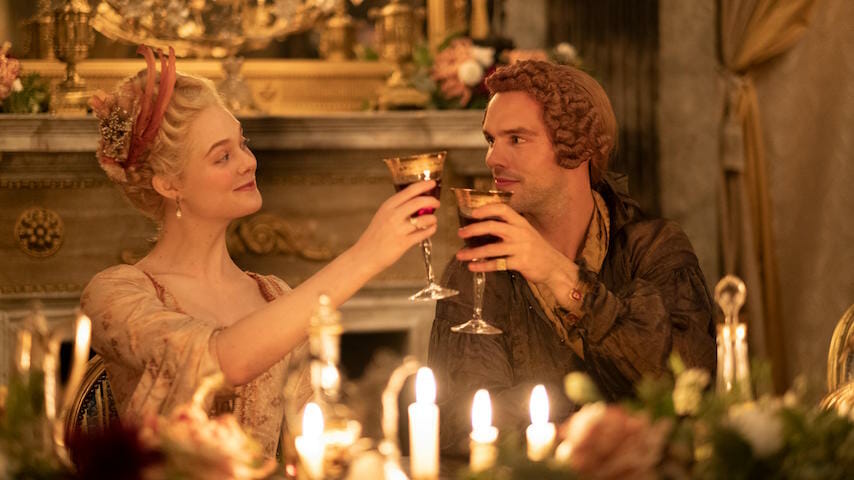
Network: Hulu
Last Week’s Ranking: Not Eligible
This Week: A hugely clever and entertaining chronicle of Catherine’s rapid Russian rise.
For those who adored The Favourite, writer Tony McNamara is back with “an occasionally true story” for Hulu focused on the rise of Catherine the future great, when she was just “a 20-year-old who’s been in Russia six months, and who—with the aid of a drunken general, an angry maid, and a nervous bureaucrat—is going up against the violent regime that is Peter’s empire,” (as one character succinctly states). The 10-episode series has a crisp, fast-moving script and sumptuous costuming that looks like a traditional historical drama but feels refreshingly modern in its approach. Bathed in a Marie Antoinette meets Death of Stalin aesthetic (and never going Full Dickinson), the series’ acid, winning humor understands the familiar absurdity of an age filled with the constant juxtaposition of wealth and brutality. Emotionally affecting as a complicated dance of horror and hope, Catherine’s outright victories may be few and far between, but the journey is thrilling.
The Great begins in the mid-18th century, with Catherine’s (Elle Fanning) arrival at the Russian court as a naive German bride for Peter (Nicholas Hoult) the not-so-great and in fact very-much-awful. A script this cleverly bombastic requires very specific handling to balance its humor and drama, and both Hoult and Fanning are luminous as the ill-matched new couple. But though Catherine has a distaste (quite rightfully) for Peter, she does have a heart for her new country. “I want a strong, vibrant Russia alive with ideas, humane and progressive, where people live with dignity and purpose,” she says dreamily. “Russia?” the Emperor’s advisor Orlo (Sacha Dhawan) says in a questioning tone. “It needs to be believable.” Catherine’s maid, Marial (Phoebe Fox)—a former noble lady stripped of her position—adds, “Just tell them … no one will rape and kill you and your children, and you’ll have some bread. That would be sufficient.”
In some ways, it might be a mistake for Hulu to have released all ten hourlong episodes at once, because The Great really should be savored. The way it charts Catherine’s quiet but brave attempts to take power by growing a voice at court and discovering new things about herself is a really beautiful journey, punctuated by completely absurd events. It’s strange and wonderful and a fantastically funny ride. But it will also leave you pondering the nature of sacrifice and real change, and the courage it takes to overthrow a despot. Huzzah. —Allison Keene
For all the latest TV news, reviews, lists and features, follow @Paste_TV.